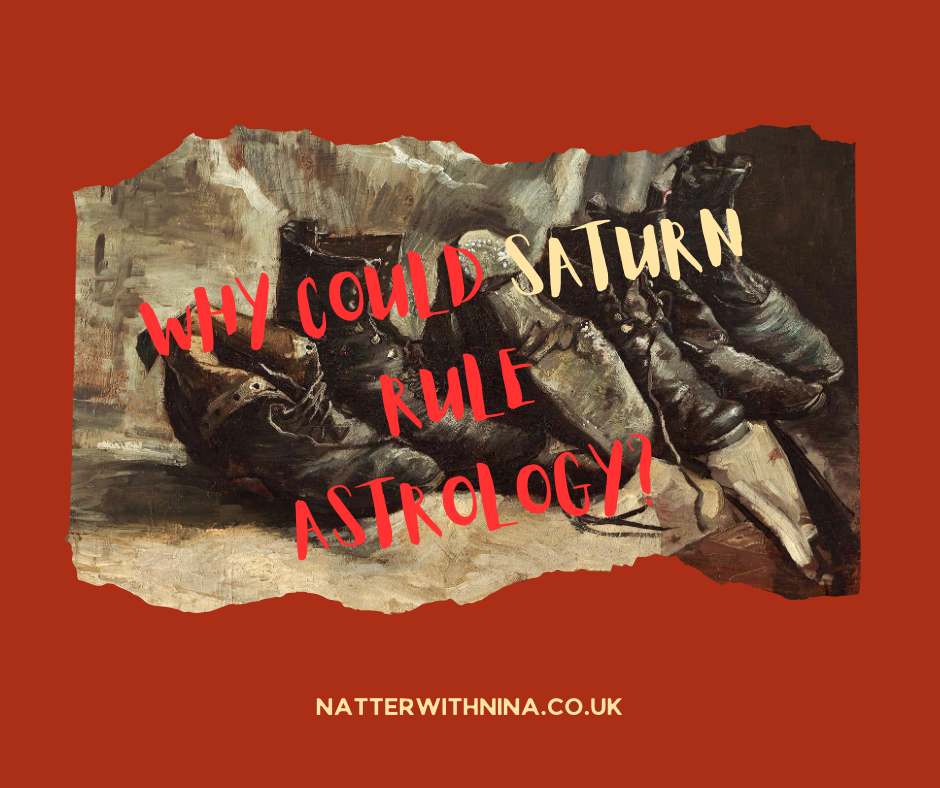The straightforward answer is because astrology is a practical dream. And practical dreams are ruled by Saturn.

When you go out on a clear night and look up at the sky with its beautiful and mysterious stars you can easily spot (with an unaided eye) a non-twinkling point of light – that is Saturn.
If you go further and use binoculars or a telescope you can see the rings of Saturn and at least the biggest one of its moons called Titan.

You may think that as a planet which has such a bad reputation in “pop astrology” Saturn portrays doom and gloom in astronomical photographs.
Brace yourself for a huge surprise.
Saturn is the most photogenic planet in the solar system. It has a golden glow, its tilt and rings are unique and magnificent and its moons so pretty.

Now, despite the picture quality of Saturn’s rings, they inevitably bring the idea of constraint and limitation. Cage can be a prison even if it is a golden cage.

Let’s look deeper into the matter.
Saturn is an old planet. It was formed 4.5 billion years ago when the whole solar system was built.
Research* recently showed that the rings of Saturn are relatively modern – they were formed between 100 and 200 million years ago.
* research by NASA, University of Durham, University of Glasgow
The scientific hypothesis** is that one of Saturn’s moons came very close to the planet and was completely destroyed.
99% of the resultant debris “ended up swallowed by the giant gas planet”.
The remaining pieces formed the rings.
The researchers called the lost moon Chrysalis because it ”blossomed” into the rings as a chrysalis transforms into a butterfly.
In other words “ Saturn does not ask you to give up your dreams just to make them real”***
** Jack Wisdom, Massachusetts Institute of Technology (MIT)
*** Steve Forrest, Evolutionary astrologer

So, as restraining as they seem, structure and hierarchy have a great place in astrology.
Look at the natal astrological chart. It is a structure – a wheel which is divided into 12 segments and every planet has a place in the segments.
The angles divide the zodiac wheel into quadrants and the aspects rule the conversation between the planets.
If you are a beginner in astrological study you need to go through the hierarchy of acquiring the astrological knowledge and skills.
You could not begin with learning about aspects or progressions if you do not know anything about planets, zodiac signs or houses and so on.


Here it is another perspective – if you feel that astrological study is too hard and stop going somewhere in the ground or first floor of the building of astrological knowledge please do not assume that you are an astrologer.
It is a proven fact that your knowledge and skills are shallow.

This fact is not discouraging. It is a Saturnian fact about reality and personal responsibility.
If you are happy to operate in the realm of superficial astrology then do it.
It is scary to look never climb to the top floor but that is where Saturn has a golden glow and its rings are stunning.

There is one more benefit of Saturn as a ruler of astrology.
The serious and practical planet with a no nonsense approach to life helps you enormously to recognise and avoid self-proclaimed astrology teachers and gurus, “established” astrological schools, and professionals with “practice and clients”.
Go for the best quality and pick Saturn as a strict but real master of making your dreams come true.

























































































